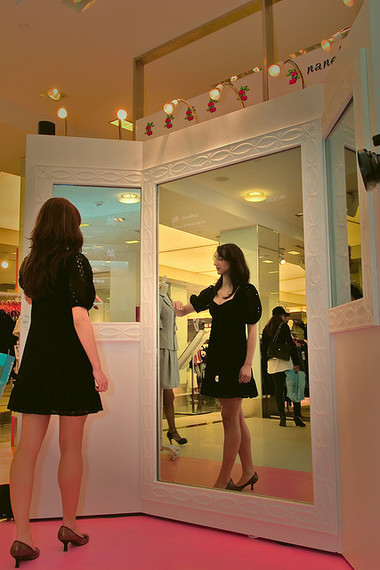Back in 2007, even before the iPhone was launched, giving us a powerful computer in our pockets or handbags, I started outlining a vision for Web 3.0.
There are numerous definitions of Web 3.0 floating around. Tim Berners-Lee, a father of the World Wide Web, talks about the "Semantic Web," a way that computers employ the meaning of words - not just pattern matching - along with logical rules to connect independent nuggets of data and so create more context for information. The formula that makes the most sense to me is this: Web 3.0 results from combining content, commerce, community and context, with personalization and vertical search. Or, to put it in a handy phrase: Web 3.0 = (4C + P + VS).
Here's what it means.
Web 1.0 was all about driving online commerce and trying to find "anything" in the tangled jungle of the Web. It produced companies like Yahoo!, Amazon.com, eBay, Netflix and Blue Nile. The rush for dollars also resulted in the dot-com meltdown. Even so, people's habits of searching, buying and selling genuinely changed. Today, you will find hundreds of thousands of merchants selling everything from cable organizers, window blinds, clothes, water filters, and everything else under the sun through specialized online stores. Specialty retail, in other words, has made a decisive transition to the web.
Web 2.0 has been primarily focused on social networking through online communities. Facebook, Twitter and LinkedIn, have been the most notable companies to emerge. But there are a plethora of others where you can "meet," "connect" and "make friends" online these days - habits no longer considered weird.
At the same time, we've seen a great deal of investment in vertical search companies. If you are looking for a job, you can go to a site like Indeed.com and search across various job portals and career sites. Or go to Kayak if you've got travel questions, or TheFind if you're seeking shopping advice. In each case, the sites have carefully customized search parameters (job seekers, for instance, can search on salary ranges, locations, job levels and so on). Therein lies the big difference with Google, a generic horizontal search engine.
Finally, Web 2.0 has brought an onslaught of user-generated content in the form of blogs, podcasts, appending comments at the bottom of articles, posting reviews of restaurants, movies, stores, and hotels. Media has become truly interactive, as opposed to the one-way world we were used to. Many more voices are being raised, and heard. The media industry, as we have known it, has been shaken to its roots.
The next wave - Web 3.0 - will organize itself around two different elements: context and the user.
By "context," I mean the intent that brings you to the Web, your reason for surfing. Looking for a job is "context," as is planning a trip or shopping for clothes. Fundamental to context is the user. And when you fuse a specific user with genuine context, you wind up with truly personalized service.
Imagine this: You are planning a trip to Rome. You are looking for a hotel around Piazza di Spagna, but not something large and impersonal - which rules out the Hassler Villa Medici. You like smaller bed-and-breakfasts, with charm, warmth, character. You want an online travel agent who can understand your needs and preferences, and find you not only the right hotel but really interesting restaurants, boutiques and shows all aligned with your taste. Normally, you use Guide du Routard as your travel guide, but today there is still a gulf between travel guides and online travel-booking sites - in other words, content and commerce are fragmented. In Web 3.0, you will see content and commerce finally come together in a big way, no longer forcing you to hop from site to site to get one job done.
On this same trip, you would love to meet local people who share your interests - say, cooking, jazz, opera. In Web 3.0, you will see the community elements of Web 2.0 pulled into context, making it as easy to find new friends with common interests, even in a distant city, as it is to book a hotel room.
Some user-generated content is already evolving into an integral part of travel planning today. At TripAdviser, for instance, travelers report back on their experiences at hotels around the world. The missing element, however, is the notion of the individual user and his or her personal needs. You don't want to read reviews from anyone. You want to read reviews by people whose taste and judgment you trust.
In a Web 3.0 world, then, a personalized travel agent will help you find and book a highly customized itinerary, leveraging all the power of previous generations of Web technology -searching (both generic and vertical), community building, content and commerce. That's how I get Web 3.0 = (4C+P+VS) - the sum of content, commerce, community and context, with personalization and vertical search.
This is complex technology, requiring sophisticated artificial-intelligence algorithms. After all, your Web 3.0 travel agent will not be a "person" but a "bot", or intelligent agent. But I suspect you will like your travel bot. And your career bot. And your shopping bot. Let's look at a shopping bot, in fact.
I am a petite woman, dark-skinned, dark-haired, brown-eyed. I have a distinct personal style, and only certain designers resonate with it (Context).
I want my personal SAKS Fifth Avenue which carries clothes by those designers, in my size (Commerce).
I want my personal Vogue, which covers articles about that style, those designers, and other emerging ones like them (Content).
I want to exchange notes with others of my size-shape-style-psychographic and discover what else looks good. I also want the recommendation system tell me what they're buying (Community).
There's also some basic principles of what looks good based on skin tone, body shape, hair color, eye color . . . I want the search engine to be able to filter and match based on an algorithm that builds in this knowledge base (Personalization, Vertical Search).
Now, imagine the same for a short, fat, white, red-haired man, who doesn't really have a sense of what to wear. And he doesn't have a wife or a girlfriend. Before Web 3.0, he could go to the personal shopper at Nordstrom.
With Web 3.0, the Internet will be his personal shopper. Aided with ubiquitous, mobile presence, these digital shoppers will anticipate all his needs, all of each of our needs.
So be patient with the technology entrepreneurs around the world, who are working through these generations of the evolving Web, trying to bring about a dramatically better user experience. After all, they - and their bots - are working for you.
[Excerpted from my new book, From eCommerce To Web 3.0]
Photo: See-ming Lee/Flickr.

